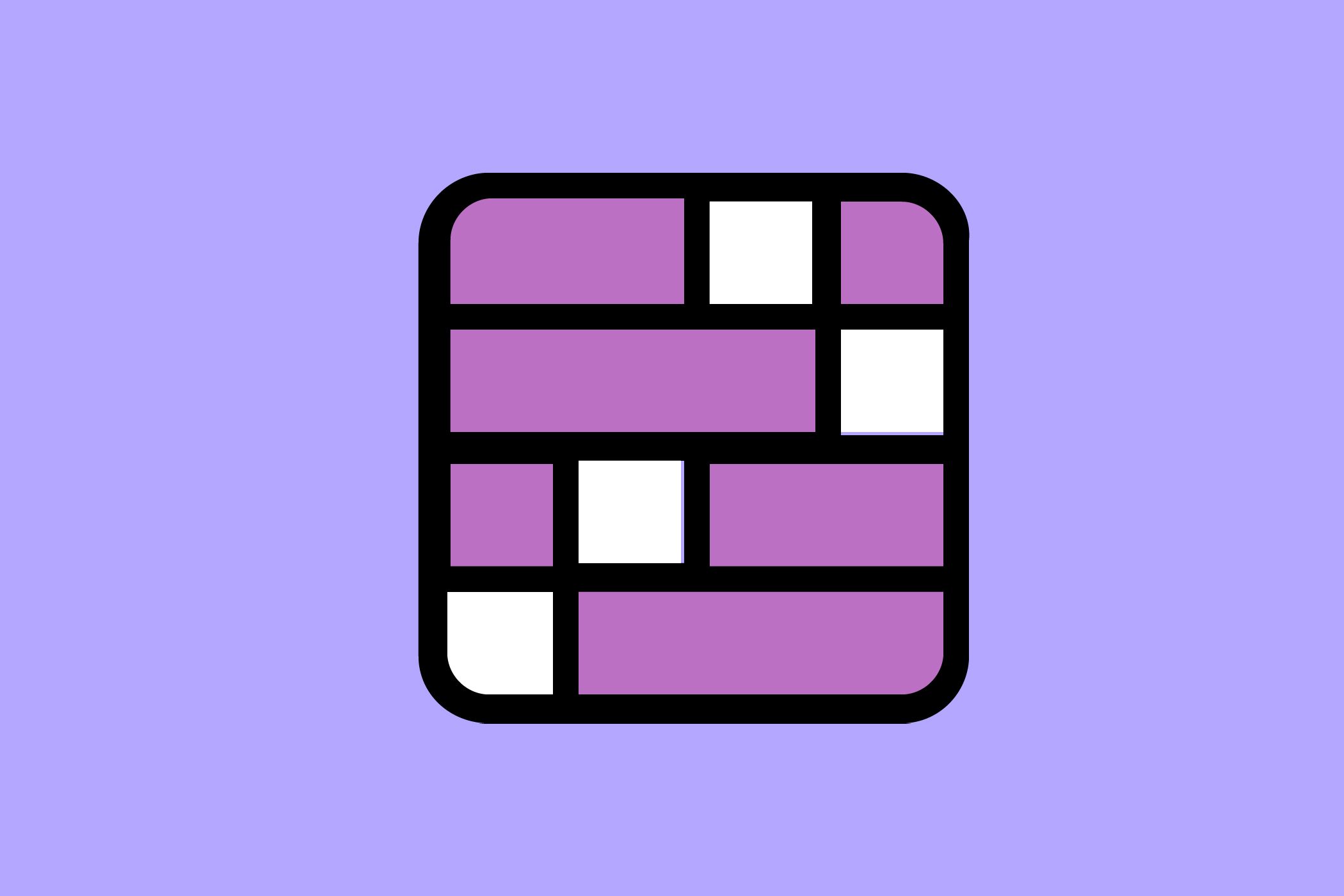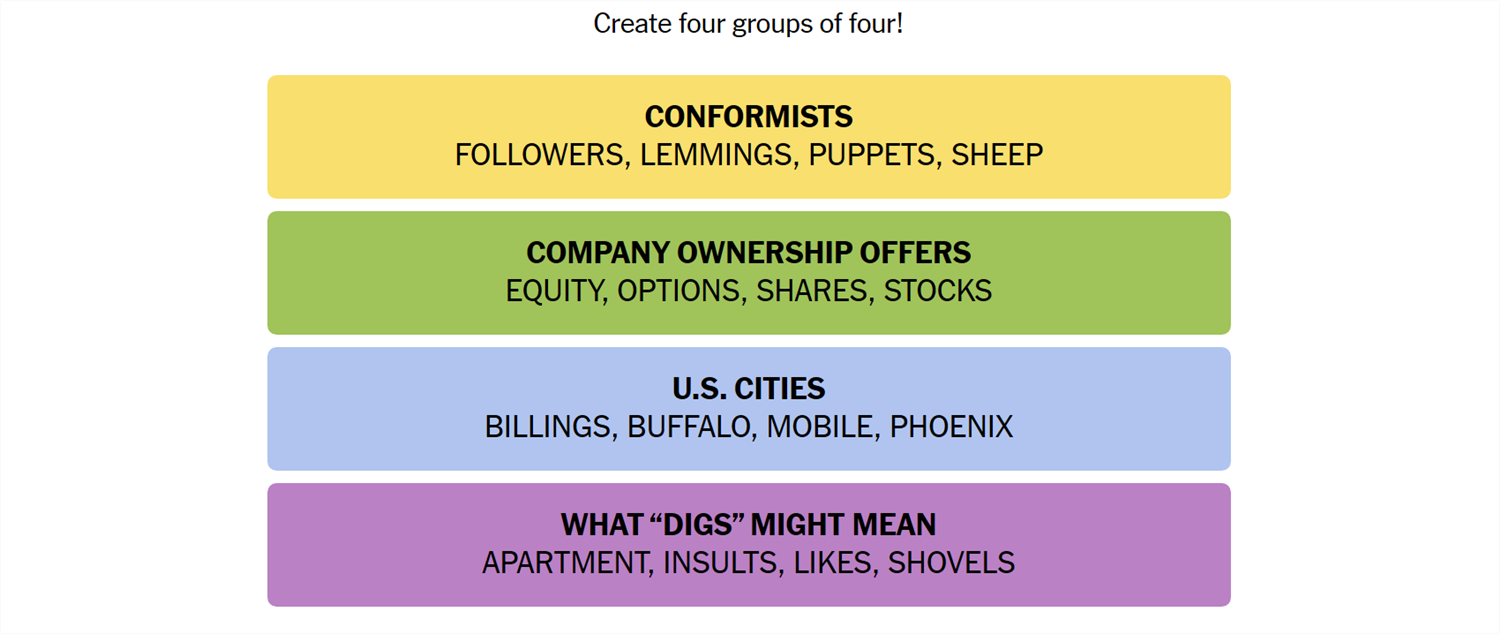
June 2 New York Times Connection Puzzle Solutions -

June 2 New York Times Connection Puzzle Solutions - #357 Edition
Quick Links
- What Is Connections?
- Hints for Today’s Connections Groups
- Today’s NYT Connections Answers
- How Did We Solve This Connections Game?
- How Do You Guess Connections Groups?
Connections is a game from the New York Times that challenges you to find the association between words. It sounds easy, but it isn’t—Connections categories can be almost anything, and they’re usually quite specific. If you need a hand getting the answers, we’ve got you covered.
What Is Connections?
Connections is a game from the New York Times. The objective is simple: sort 16 words into groups of 4. Each group of words will be connected by some common idea or theme. That common element could be anything. We have seen everything from games that rely on the number of letters in the words to categories that require you to spot an extra letter at the end of the word. Sometimes they’re references to economics, other times they reference fairy tales. There is no telling what sort of association there will be between words.
Once you’re confident you understand the connection, select 4 words, then hit “Submit.” You have only four attempts in total, so don’t be too guess-happy.
Hints for Today’s Connections Groups
Here are a few hints for the 357th Connections game to get you started:
- Yellow: Fitting in with the crowd.
- Green: Buy or are given a part of a corporation
- Blue: Urban areas.
- Purple: All different synonyms for one word.
If you still need help, the actual group names are:
- Yellow: Conformists
- Green: Company Ownership Offers
- Blue: U.S. Cities
- Purple: What “Digs” Might Mean
Today’s NYT Connections Answers

Conformist (Yellow):
Followers, Lemmings, Puppets, Sheep
Company Ownership Offers (Green):
Equity, Options, Shares, Stocks
U.S. Cities (Blue):
Billings, Buffalo, Mobile, Phoenix
What “Digs” Might Mean (Purple):
Apartment, Insults, Likes, Shovels
How Did We Solve This Connections Game?
June 2nd’s Purple group was particularly difficult, but the rest of the categories weren’t too bad.
The word I started with was lemming. Lemmings are small rodents, but lemming is also used as a word to describe someone that “always goes with the crowd.” Puppets, sheep, and followers also go along with that idea. The Yellow group was “Conformists.” Interestingly, lemmings don’t actually engage in mass suicide—that entire thing is a myth.
Equity, shares, stocks, and options are all finance related terms. That was a strong enough link that I just went for it. They were in the Green group, “Company Ownership Options.”
Buffalo and Phoenix are both animals (though one is fictional), but they’re also both cities in New York and Arizona, respectively. There aren’t any other animals in the remaining words, but Mobile is a city in Alabama, and Billings is a city in Montana. The Blue group was “U.S. Cities.”
That left Purple, but try as I might, I couldn’t figure out what connection tied apartment, insults, likes, and shovels together. It turns out that the group was named “What Digs Might Mean.”
How Do You Guess Connections Groups?
There is no quick, reliable way to approach Connections like there is with Wordle, since Connections isn’t algorithmic. However, there are a few things to keep in mind that can help.
- Look for similar parts of speech. Are some words verbs and others nouns? Are some adjectives? Try mentally grouping them based on those categories and see if any other patterns jump out at you.
- Are the words synonyms? Sometimes categories will just be synonyms for a phrase, or very close to synonyms. Don’t rely too closely on this, though. Occasionally, Connections will deliberately throw in words that are sometimes synonyms to mislead you.
- Try saying the words. Sometimes, saying the words helps. One puzzle we saw included the words go, rate, faster, clip, pace, speed, move, commute, and hurry—all of which are obviously related to the idea of motion. However, when you say them, it becomes a little more obvious that only four (go, move, hurry, faster) are things you’d actually say to prompt someone to get moving.
- Expect the red herring . Connections usually has words that could be plausibly, yet incorrectly, grouped together. Take the words Bud, Corona, and Light, as an example. You might instinctively see those three words together and assume they’re lumped together in a category related to beer—but they weren’t.
- Look for distinct words. If a word on your board doesn’t have multiple meanings or can really only be used in one context, try using that word as the basis for a category.
- Shuffle the board. Sometimes, moving words around will help you look at them in new ways.
If you didn’t solve this one, don’t feel too bad—there’s always tomorrow! And those words may align with a topic you’re interested in, giving you a leg up on the competition.
Also read:
- [New] 2024 Approved How to Create Insta Highlight Cover Photos An Ultimate Guide
- Can Artificial Intelligence Create an Engaging Radio Experience for Modern Audiences?
- Explore the World of AI on Your Phone - Introducing ChatGPT for iOS
- Exploring the Capabilities of OpenAI's SHAP-E for Model Interpretation
- Exploring the Convergence: Microsoft Buys Blizzard, AI Innovations Take Center Stage in Art & Linguistics – Join Us on This [Podcast] Journey
- Exploring TruthGPG: Unraveling Its True Nature & Potential Scam Risks
- From Online Availability to Local Usage: Llama 2'S Journey
- Galaxy A05 Video Recovery - Recover Deleted Videos from Galaxy A05
- Getting Your GeForce Experience Running Smoothly Again: Problem Solved!
- How Effective Is ChatGPT in Regulating and Controlling Your Residential IoT?
- How To Simulate GPS Movement With Location Spoofer On Oppo Reno 8T? | Dr.fone
- In 2024, Exclusive Selections Best Virtual Reality Titles for Cardboard
- Innovating with Vision: The Eight Powerful Applications of ChatGPT
- Insider's Guide to Mechanical Keyboard Modding
- Is Forefront AI a Stronger Contender than ChatGPT? Find Out Here
- PC上でのDVD情報保存:効果的な3つのテクニック
- Solving the Dxgkrnl Fatal Error in Windows Videos - Step-by-Step Guide
- Top 5 Best RTF Helis - Why Blade E-Flite mCX2 Reigns Supreme
- Ultimate Guide to Solving 'python2e4.dll Not Found' In Python Setup
- Title: June 2 New York Times Connection Puzzle Solutions -
- Author: Larry
- Created at : 2024-12-26 23:06:03
- Updated at : 2024-12-27 19:34:57
- Link: https://tech-hub.techidaily.com/june-2-new-york-times-connection-puzzle-solutions-357-edition/
- License: This work is licensed under CC BY-NC-SA 4.0.